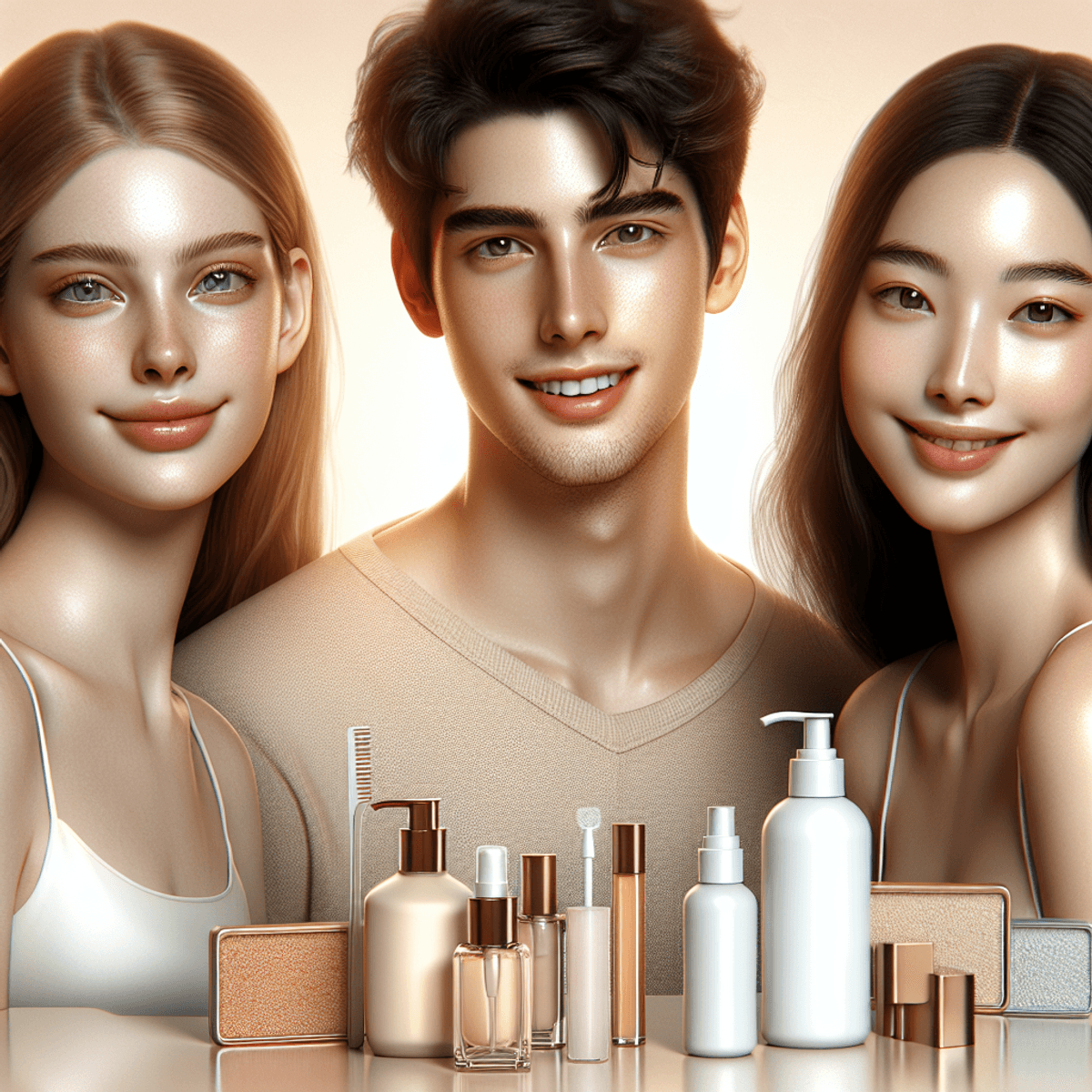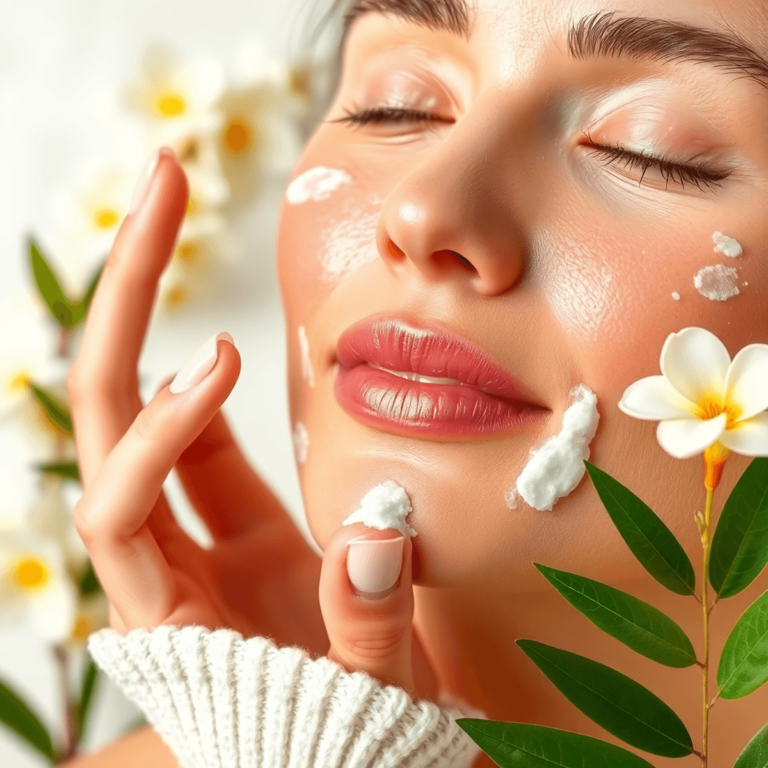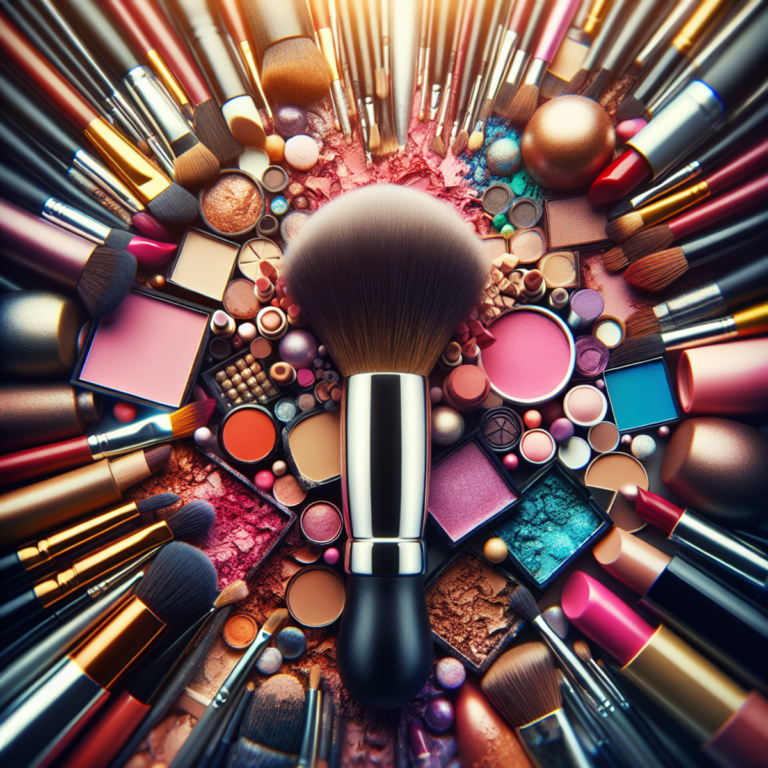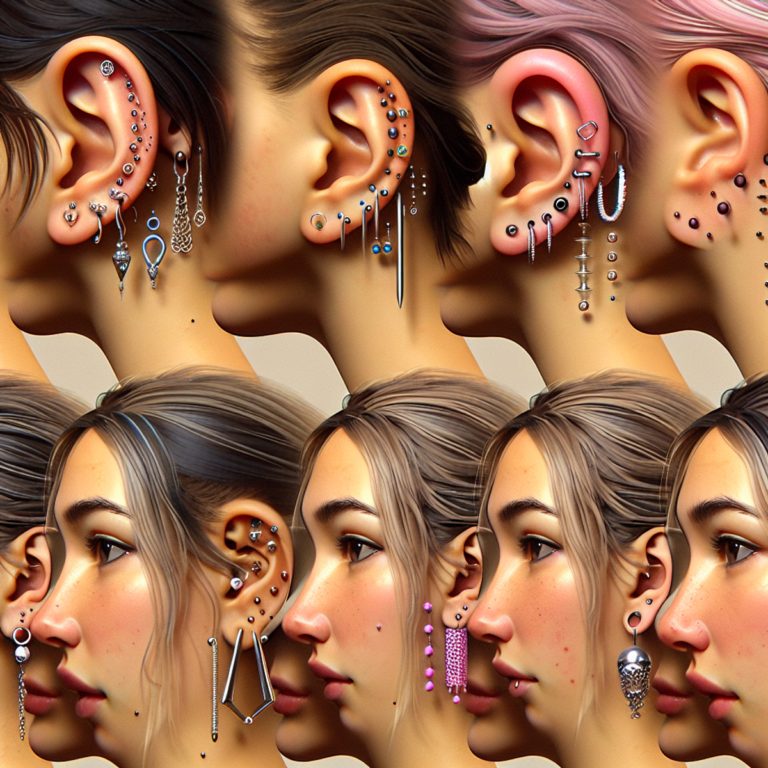A Full Guide On How To Get Rid Of Acne

Introduction
A Full Guide On How To Get Rid Of Acne
Acne is a common skin condition that affects people of all ages, especially teenagers. It shows up as spots, oily skin, and sometimes painful bumps on the face, back, and chest. Acne can appear in different forms like blackheads, whiteheads, small red bumps, pus-filled pimples, hard lumps under the skin, and deep cysts.
Acne can have a big impact on people’s lives. Besides being physically uncomfortable, it often causes emotional stress and lowers self-esteem. Both teenagers and adults may find their social interactions and mental health affected by constant breakouts.
To effectively manage acne, it’s important to understand it. Knowing the different types of acne, its causes, and debunking common myths will help you make informed decisions for achieving clearer skin. This guide will give you practical tips on skincare routines, lifestyle changes, over-the-counter treatments, prescription options, and natural remedies tailored to your needs.
Understanding Acne
Understanding the different types of acne and their characteristics can help you identify and manage them effectively. According to MedlinePlus, acne is a common skin condition that affects many people at some point in their lives.
Types of Acne
- Blackheads: These small, dark-colored spots appear when pores are clogged with sebum and dead skin cells. The black color is due to the oxidation of the clogged material.
- Whiteheads: Similar to blackheads, whiteheads are closed comedones where the clogged pore remains beneath the skin’s surface, resulting in a white bump.
- Papules: These small, red, raised bumps are inflamed and can be tender to touch. They occur when the walls surrounding your pores break down from severe inflammation.
- Pustules: Often known as pimples, pustules are red at their base with pus at the top. They result from a combination of oil, bacteria, and dead skin cells.
- Nodules: Larger than papules or pustules, nodules are deep-seated, painful lumps beneath the skin caused by clogged, swollen pores that grow larger due to irritation.
- Cysts: The most severe form of acne, cysts are large, pus-filled lumps that look similar to boils. They carry a high risk of scarring if not treated properly.
Common Causes of Acne
Acne arises from various factors:
- Hormonal Changes: Puberty triggers increased sebum production due to hormonal fluctuations.
- Genetics: If your parents had acne, you’re more likely to develop it too.
- Medications: Certain drugs like corticosteroids and lithium can contribute to acne development.
- Other Factors:
- Diet
- Stress
- Environmental conditions
Debunking Common Myths About Acne
Several misconceptions about acne persist:
- Poor Hygiene Does Not Cause Acne: Acne isn’t caused by dirt or poor hygiene. In fact, over-washing your face can irritate the skin and make acne worse.
- Diet Alone Doesn’t Cause Acne: While certain foods may exacerbate acne for some people, diet alone is not a direct cause.
- Only Teenagers Get Acne: Adults can also suffer from acne due to hormonal changes or other factors.
Understanding these aspects helps in demystifying acne and equips you with the knowledge needed for effective management strategies.
The Role of Skincare Routine in Acne Management
Establishing a consistent skincare routine for acne-prone skin is crucial in managing breakouts and maintaining healthy skin. A dedicated regimen helps balance oil production, remove impurities, and prevent clogged pores that can lead to acne.
Importance of a Consistent Skincare Routine
Consistency is key. By following a regular skincare routine, you ensure that your skin receives the necessary care and treatment to combat acne. Regular cleansing removes excess oil, dirt, and dead skin cells that can accumulate on the skin’s surface. This reduces the likelihood of clogged pores and subsequent breakouts.
Recommended Practices for Washing the Face
Adopting proper cleansing techniques for acne-prone skin can make a significant difference. Here are some essential practices:
- Gentle Cleansing Twice Daily: Wash your face twice a day—once in the morning and once before bed—with a mild, non-irritating cleanser. Avoid harsh soaps that can strip the skin of its natural oils.
- Use Lukewarm Water: Hot water can irritate the skin and exacerbate acne, while cold water may not effectively remove impurities.
- Pat Dry with a Soft Towel: Rubbing your face with a towel can cause irritation. Instead, gently pat your face dry after washing.
Choosing Non-Comedogenic Products
Selecting non-comedogenic products is crucial for preventing clogged pores. Non-comedogenic products are specifically formulated not to block pores, reducing the risk of breakouts.
- Moisturizers: Even acne-prone skin needs moisture. Look for lightweight, oil-free moisturizers labeled as non-comedogenic.
- Sunscreen: Protecting your skin from UV damage is essential. Choose a non-comedogenic sunscreen to avoid clogging pores while shielding your skin from harmful rays.
- Makeup: Opt for non-comedogenic makeup products to prevent exacerbating acne conditions.
By adhering to these practices and selecting appropriate products, you create an environment conducive to clearer, healthier skin.
Lifestyle Changes to Prevent Acne
Diet and Acne
Eating a balanced diet can greatly help in managing acne. Studies show that foods high in sugar and dairy products might worsen breakouts. Cutting down on these can potentially help you control acne flare-ups. Instead, try to include more of the following in your meals:
- Whole grains
- Lean proteins
- Fresh fruits and vegetables
These foods are good for your skin and might reduce inflammation, which is often linked to acne.
Stress Management Techniques for Acne Prevention
Stress can cause hormonal changes that lead to more oil production, resulting in additional breakouts. Using stress management techniques can help lessen this effect. Here are some methods you might want to try:
- Therapy: Talking with a mental health professional can give you strategies to manage stress effectively.
- Relaxation Methods: Activities like yoga, meditation, or deep-breathing exercises can lower stress levels.
- Regular Exercise: Working out not only reduces stress but also promotes healthy blood flow, which is good for your skin.
Knowing how lifestyle factors affect acne can help you make better choices for your skin health.
Over-the-Counter Treatments for Acne: What Works?
When it comes to over-the-counter topical treatments for acne, several options have proven effective and are readily available in stores or online. These treatments target different aspects of acne, from bacteria to inflammation, helping you manage breakouts more effectively.
Benzoyl Peroxide
- How it works: Kills acne-causing bacteria and reduces oil production.
- Available as: Gels, creams, and cleansers.
- How to use: Apply once or twice daily; start with lower concentrations to minimize irritation.
- Comparison with Salicylic Acid: For a deeper understanding of how salicylic acid compares with benzoyl peroxide, check out this resource.
Salicylic Acid
- How it works: Exfoliates dead skin cells and unclogs pores.
- Available as: Cleansers, toners, and spot treatments.
- How to use: Use daily; concentration varies from 0.5% to 2%.
Alpha Hydroxy Acids (AHAs)
- How it works: Promotes exfoliation and improves skin texture.
- Available as: Peels, serums, and moisturizers.
- How to use: Apply as directed; can be used a few times a week.
- AHA vs BHA: If you’re curious about the differences between AHAs and BHAs in skincare, this article on AHA vs BHA provides valuable insights.
Sulfur
- How it works: Dries out the surface of the skin to absorb excess oil.
- Available as: Masks and spot treatments.
- How to use: Apply to affected areas; often combined with other ingredients.
These over-the-counter treatments serve as accessible starting points for managing mild to moderate acne. Additionally, if you’re looking for ways on how to get rid of pimples overnight, consider exploring these quick solutions.
Benzoyl Peroxide: A Powerful Weapon Against Acne
Benzoyl peroxide is a popular choice for treating acne because it effectively fights the bacteria that cause breakouts. This active ingredient works by:
- Killing Bacteria: It releases oxygen into the pores, creating an environment where acne-causing bacteria cannot survive.
- Reducing Inflammation: Benzoyl peroxide helps to decrease swelling and redness associated with inflamed acne lesions.
Benefits of Using Benzoyl Peroxide
- Fast Action: Often, users notice an improvement in their skin within a few days to weeks.
- Accessibility: Available over-the-counter in various formulations like gels, creams, and cleansers.
- Dual Function: Besides targeting bacteria, it also helps to dry out excess oil and slough off dead skin cells.
Potential Side Effects
While benzoyl peroxide is effective, it can cause side effects such as:
- Dryness and Peeling: Users might experience flaking or peeling skin.
- Irritation: Redness and itching are common during initial use.
- Sensitivity: The skin may become more sensitive to sunlight.
To minimize these effects, start with a lower concentration and gradually increase as your skin builds tolerance.
Salicylic Acid: Your Go-To Exfoliant for Clearer Skin
Salicylic acid is a beta hydroxy acid (BHA) known for its effectiveness in treating acne. Its primary role is to exfoliate dead skin cells and unclog pores, making it an essential ingredient in many acne treatment products.
How Salicylic Acid Works
1. Exfoliation
Salicylic acid penetrates the skin and helps to break down the bonds between dead skin cells. This makes it easier for the skin to shed these cells naturally.
2. Unclogging Pores
By removing dead skin cells, salicylic acid prevents them from accumulating and clogging pores, which can lead to blackheads and whiteheads.
Different Forms of Salicylic Acid Products
You can find salicylic acid in various forms, each tailored to different needs:
- Cleansers: Ideal for daily use, these help maintain clear pores and prevent new breakouts.
- Spot Treatments: Concentrated doses specifically target individual pimples, reducing inflammation and speeding up healing.
Using salicylic acid for acne treatment effectively requires consistency and the right product choice based on your skin type and concerns.
When to Seek Prescription Medications for Severe Acne?
Recognizing when over-the-counter treatments are insufficient can be crucial in managing severe acne cases. Prescription medications for severe acne cases typically come into play when:
- Persistent Breakouts: If your skin does not respond to OTC treatments like benzoyl peroxide and salicylic acid after several weeks.
- Painful Nodules or Cysts: Large, painful nodules or cysts that do not heal easily may require stronger interventions.
- Scarring: When acne leads to noticeable scarring, it’s vital to seek professional help to prevent further damage.
- Psychological Impact: If acne significantly affects your self-esteem and emotional well-being, a dermatologist can offer more potent solutions.
Prescription options include topical retinoids, oral antibiotics, and hormonal therapies. Consulting a dermatologist ensures you receive a tailored treatment plan aimed at effectively managing severe acne.
Exploring Oral Antibiotics as a Treatment Option for Severe Acne
Oral antibiotics for severe acne treatment can be an effective solution when topical treatments fail to provide the desired results. These medications work by targeting the bacteria responsible for acne, Propionibacterium acnes, reducing inflammation and bacterial levels in the skin.
How Oral Antibiotics Help
- Reduction of Inflammation: Oral antibiotics like doxycycline and minocycline help to diminish inflammation, making them particularly useful for treating inflammatory acne lesions such as papules, pustules, and cysts.
- Bacterial Control: By decreasing the population of acne-causing bacteria on the skin, these antibiotics help prevent new breakouts and promote healing of existing lesions.
Commonly Prescribed Oral Antibiotics
- Doxycycline: Known for its anti-inflammatory properties and effectiveness against acne-causing bacteria.
- Minocycline: Another popular choice that is often reserved for more severe cases due to its potent anti-inflammatory effects.
- Erythromycin: Often used for individuals who cannot tolerate tetracycline antibiotics.
Considerations
While oral antibiotics can be highly effective, they are generally recommended for short-term use to minimize potential side effects such as antibiotic resistance. Consulting with a dermatologist is crucial to determine if this treatment aligns with your specific needs and skin type.
Hormonal Treatments: Tackling the Root Cause of Hormonal Acne in Women
Hormonal imbalances are a major cause of acne in women, especially during times of hormonal changes like puberty, menstruation, pregnancy, and menopause. These imbalances can increase oil production, clogging pores and causing breakouts.
Key hormonal treatments for women with hormonal acne include:
- Oral Contraceptives: Birth control pills containing estrogen and progestin can help regulate hormones and reduce acne.
- Spironolactone: This medication blocks androgen receptors, reducing the effects of male hormones that can trigger acne.
- Hormone Replacement Therapy (HRT): For women experiencing menopause, HRT can help manage hormone levels and reduce acne.
It’s crucial to consult a healthcare provider to determine the appropriate treatment based on individual hormonal profiles. Balancing hormones effectively addresses the root cause of acne, leading to clearer skin.
Natural Remedies: Can They Really Help with Acne?
Exploring natural remedies for mild to moderate acne relief can be both intriguing and beneficial. While not as potent as prescription medications, certain natural ingredients have shown promise in managing acne symptoms.
Tea Tree Oil
Tea tree oil is a popular choice due to its anti-inflammatory and antimicrobial properties. It can help reduce the redness and swelling of pimples. A few drops diluted in a carrier oil can be applied directly to affected areas.
Pros:
- Natural antibacterial agent
- Reduces inflammation
Cons:
- May cause skin irritation in sensitive individuals
- Requires consistent use for visible results
Green Tea Extract
Green tea extract is another natural remedy praised for its antioxidant and anti-inflammatory benefits. Applying green tea extract topically or drinking green tea can help soothe the skin and reduce sebum production.
Pros:
- Rich in antioxidants that promote skin health
- Helps regulate sebum production
Cons:
- Less effective than conventional treatments
- Results may vary from person to person
Limitations of Natural Remedies
While natural remedies like tea tree oil and green tea extract can offer some relief, they are generally less effective than over-the-counter or prescription treatments. Consistency is key, and results may take longer to appear. Always conduct a patch test before applying any new product to avoid adverse reactions.
Quick Fixes: How to Remove Pimples Overnight?
When you have an unexpected breakout and need a quick solution, there are several overnight remedies for quick pimple removal that can help reduce the size and redness of pimples temporarily.
Popular Overnight Remedies
1. Ice Treatment
- How It Works: Applying ice can help reduce inflammation and swelling. The cold constricts blood vessels, which may lessen the appearance of redness.
- How to Use: Wrap an ice cube in a clean cloth and apply it to the affected area for about 5-10 minutes. Repeat as needed, but avoid direct contact with skin to prevent frostbite.
2. Spot Treatments
- Benzoyl Peroxide: This topical treatment works by killing acne-causing bacteria and reducing inflammation. Apply a small amount directly to the pimple.
- Salicylic Acid: Effective in unclogging pores and exfoliating dead skin cells. Use a spot treatment containing salicylic acid for targeted application.
- Tea Tree Oil: Known for its antibacterial properties, tea tree oil can be an effective natural remedy. Dilute it with a carrier oil before applying to avoid irritation.
Do’s and Don’ts for Quick Pimple Removal
Do’s:
- Cleanse Gently: Before applying any treatment, make sure your face is clean. Use a mild cleanser suitable for your skin type.
- Use Non-Comedogenic Products: Ensure that any product you apply is non-comedogenic to avoid further clogging pores.
- Hydrate Your Skin: Even while treating pimples, maintain proper hydration to support skin healing.
Don’ts:
- Avoid Picking or Popping Pimples: Picking can lead to scarring and worsen inflammation.
- Steer Clear of Harsh Scrubs: Exfoliating too aggressively can irritate the skin and exacerbate acne.
- Limit Multiple Treatments: Using multiple treatments simultaneously can overwhelm your skin, causing more harm than good.
Understanding how to get rid of pimples overnight involves using proven methods while avoiding common pitfalls that may worsen the condition.
Long-term Strategies for Lasting Results: Beyond Temporary Solutions
Developing a comprehensive skincare strategy is essential for achieving lasting results and preventing future breakouts. Long-term strategies for permanent reduction of breakouts include:
- Consistent Skincare Routine: Establish a daily regimen that incorporates gentle cleansing, exfoliation, and moisturizing. Using products tailored to your skin type helps maintain balance and prevent new acne from forming.
- Targeted Treatments: Incorporate ingredients such as retinoids, which promote cell turnover and prevent clogged pores. Retinoids are available in both over-the-counter and prescription strengths.
- Sun Protection: Sunscreen is crucial. Opt for non-comedogenic sunscreens to protect your skin without causing breakouts. Sun damage can exacerbate acne scars and pigmentation issues.
- Healthy Diet: Maintain a balanced diet rich in fruits, vegetables, lean proteins, and whole grains. Reducing intake of high-sugar foods and dairy may help minimize acne flare-ups.
- Hydration: Drink plenty of water to keep your skin hydrated from within. Well-hydrated skin is more resilient against irritants that can lead to acne.
- Regular Dermatologist Visits: Schedule routine check-ups with a dermatologist to monitor your skin’s progress and adjust treatments as needed. Professional guidance ensures that your skincare strategy remains effective.
Prioritizing these long-term strategies alongside temporary solutions creates the foundation for clearer, healthier skin.
Embracing Your Skin Journey: Managing Expectations and Seeking Professional Help When Needed
Understanding that acne treatments take time is crucial. Managing expectations with skincare treatments can prevent disappointment. Typically, visible improvements may take several weeks to months.
When to consult a dermatologist:
- Persistent or severe acne unresponsive to over-the-counter treatments
- Scarring or significant skin damage
- Emotional distress due to acne
Remember, professional advice can provide personalized treatment plans tailored to your specific needs.
FAQs (Frequently Asked Questions)
What is acne and who does it affect?
Acne is a common skin condition characterized by various types of blemishes such as blackheads, whiteheads, and cysts. It can affect individuals of all ages, but it is most prevalent among teenagers and young adults due to hormonal changes.
What skincare routine is recommended for acne-prone skin?
A consistent skincare routine is crucial for managing acne. This includes gentle cleansing twice daily with non-comedogenic products to prevent clogged pores. Avoid harsh scrubs that can irritate the skin.
How do lifestyle modifications impact acne prevention?
Lifestyle changes such as maintaining a balanced diet low in sugar and dairy, along with effective stress management techniques like therapy or relaxation methods, can significantly help in reducing breakouts.
When should I consider using over-the-counter treatments for acne?
Over-the-counter topical treatments are effective for many individuals dealing with mild to moderate acne. If you notice persistent breakouts despite using these products, it may be time to consult a dermatologist for stronger options.
What are the benefits and side effects of benzoyl peroxide?
Benzoyl peroxide is a powerful treatment that works by killing bacteria and reducing inflammation associated with acne. While it can be very effective, potential side effects include dryness and irritation of the skin.
How can I manage my expectations when treating acne?
It’s important to understand that managing acne is a journey that may take time. Set realistic goals for your skincare regimen and consult a dermatologist when needed to help guide your treatment plan effectively.










